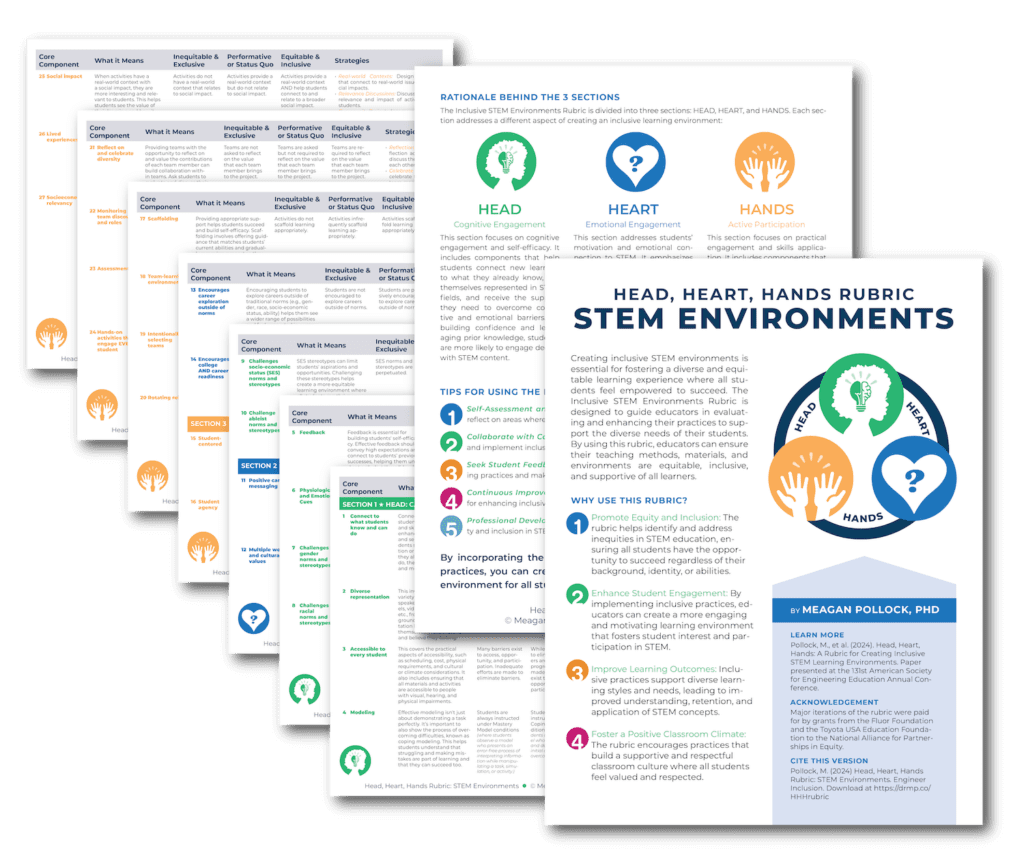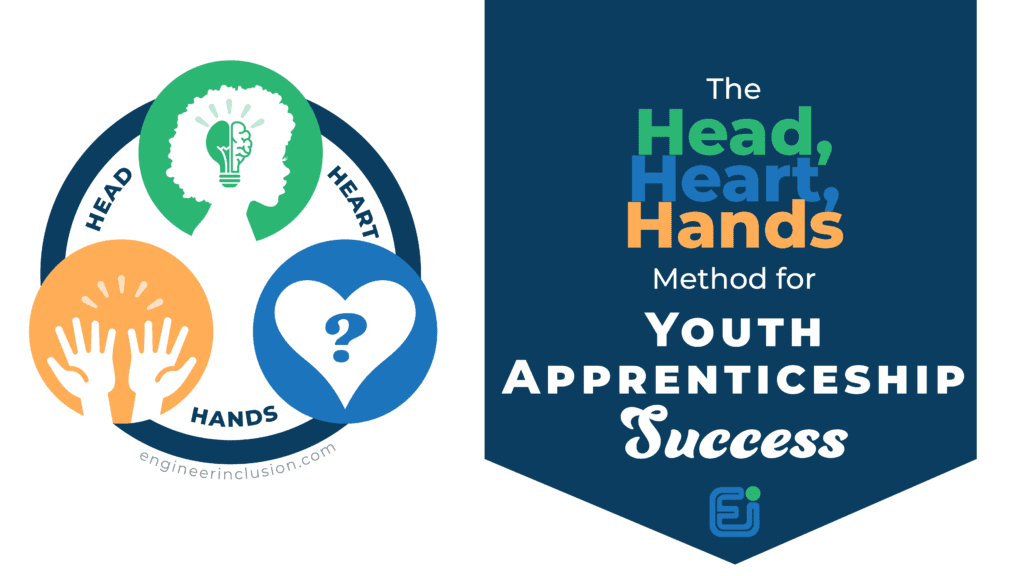Discover how the Inclusive STEM Environments Rubric can help you create a more equitable and engaging classroom. Download our comprehensive guide with 27 actionable strategies to support every student’s success in STEM!

Creating an inclusive STEM environment is essential for fostering a diverse and equitable learning experience. All students should feel empowered to succeed, regardless of their background, identity, or abilities. To help educators achieve this, we’ve developed the Inclusive STEM Environments Rubric, a comprehensive tool designed to guide you in evaluating and enhancing your teaching practices.
Why use the rubric?
- Promote Equity and Inclusion: Our rubric helps identify and address inequities in STEM education, ensuring that all students have the opportunity to succeed.
- Enhance Student Engagement: Implementing inclusive practices can create a more engaging and motivating learning environment, fostering student interest and participation in STEM.
- Improve Learning Outcomes: By supporting diverse learning styles and needs, inclusive practices lead to improved understanding, retention, and application of STEM concepts.
- Foster a Positive Classroom Climate: The rubric encourages practices that build a supportive and respectful classroom culture, where all students feel valued and respected.
Why Head, Heart and Hands?
The Inclusive STEM Environments Rubric is divided into three sections: HEAD, HEART, and HANDS. Each section addresses a different aspect of creating an inclusive learning environment:

HEAD: Can I Do It?
This section focuses on cognitive engagement and self-efficacy. It includes components that help students connect new learning to what they already know, see themselves represented in STEM fields, and receive the support they need to overcome cognitive and emotional barriers. By building confidence and leveraging prior knowledge, students are more likely to engage deeply with STEM content.

HEART: Do I want to do it?
This section addresses students' motivation and emotional connection to STEM. It emphasizes the importance of positive career messaging, recognizing diverse work and cultural values, and encouraging exploration beyond traditional norms. By fostering a sense of belonging and relevance, students are more likely to develop a sustained interest in STEM.

HANDS: Let me do it?
This section focuses on practical engagement and skills application. It includes components that promote hands-on learning, student agency, and collaborative environments. By providing opportunities for active participation and skill development, students can apply their knowledge in meaningful ways and gain practical experience in STEM.
Three Rubric Levels
The rubric uses three levels to describe practices:
- Inequitable and Exclusive: Practices that fail to address or actively perpetuate inequities, making it difficult for all students to succeed.
- Status Quo and Performative: Practices that make some effort toward inclusivity but fall short of fully engaging and supporting all students.
- Equitable and Inclusive: Practices that actively and intentionally promote equity and inclusivity, ensuring that all students have the support and opportunities they need to succeed.
Download the Rubric
Our comprehensive PDF includes 27 detailed rubric items, each with explicit strategies to help you implement more inclusive and equitable practices in your classroom. These strategies are designed to make it easy for you to put these concepts into practice, even if you’re new to these ideas.
By incorporating the Inclusive STEM Environments Rubric into your teaching practices, you can create a more equitable, engaging, and supportive learning environment for all students, helping them succeed and thrive in STEM.
This paper explores the implementation and efficacy of a novel rubric designed for pre-college STEM educators participating in a six-month professional development program focusing on creating inclusive STEM learning environments. The rubric, grounded in contemporary educational theory, emphasizes 27 key elements categorized under three main tenets: cognitive engagement (Head), emotional engagement (Heart), and active participation (Hands) in STEM. Educators first employed this rubric during a summer institute, applying it to observations made in engineering summer camps. Then, they used the rubric within their classrooms and STEM clubs. Their assessments aimed to classify observed teaching practices and learning environments as “Inequitable and Exclusive,” “Performative or Status Quo,” or “Equitable and Inclusive.” Aside from an assessment tool, the rubric provides a framework for improving the learning environment.
The paper investigates how educators integrated the rubric into their practice and its impact on enhancing inclusive teaching methodologies in STEM education. The study contextualizes the rubric within a rich theoretical framework, drawing upon literature in educational psychology, inclusive pedagogy, and STEM education research. The findings offer insights into how educators discern and foster inclusivity in STEM learning environments, providing evidence of the rubric’s utility in professional development. This study contributes to the field by offering a validated tool for educators to self-assess and evolve their pedagogical approaches towards more inclusive STEM education, ultimately aiming to broaden STEM participation across diverse student populations.
Acknowledgment
Major iterations of the rubric were paid for by grants from the Fluor Foundation and the Toyota USA Education Foundation to the National Alliance for Partnerships in Equity.
CITE THIS VERSION
Pollock, M. (2024) Head, Heart, Hands Rubric: STEM Environments. Engineer Inclusion. Download at https://drmp.co/HHHrubric












